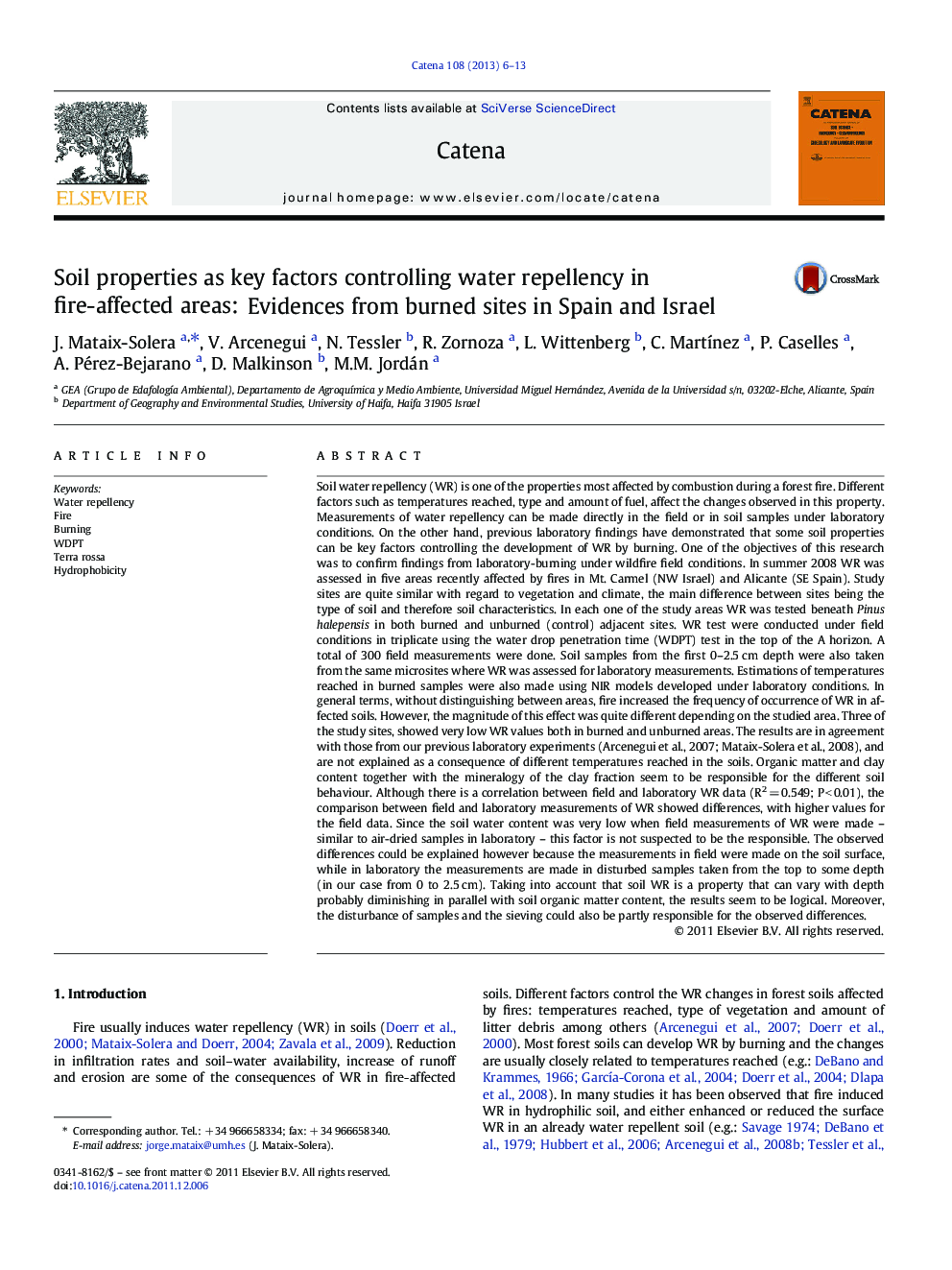| کد مقاله | کد نشریه | سال انتشار | مقاله انگلیسی | نسخه تمام متن |
|---|---|---|---|---|
| 4571594 | 1629244 | 2013 | 8 صفحه PDF | دانلود رایگان |

Soil water repellency (WR) is one of the properties most affected by combustion during a forest fire. Different factors such as temperatures reached, type and amount of fuel, affect the changes observed in this property. Measurements of water repellency can be made directly in the field or in soil samples under laboratory conditions. On the other hand, previous laboratory findings have demonstrated that some soil properties can be key factors controlling the development of WR by burning. One of the objectives of this research was to confirm findings from laboratory-burning under wildfire field conditions. In summer 2008 WR was assessed in five areas recently affected by fires in Mt. Carmel (NW Israel) and Alicante (SE Spain). Study sites are quite similar with regard to vegetation and climate, the main difference between sites being the type of soil and therefore soil characteristics. In each one of the study areas WR was tested beneath Pinus halepensis in both burned and unburned (control) adjacent sites. WR test were conducted under field conditions in triplicate using the water drop penetration time (WDPT) test in the top of the A horizon. A total of 300 field measurements were done. Soil samples from the first 0–2.5 cm depth were also taken from the same microsites where WR was assessed for laboratory measurements. Estimations of temperatures reached in burned samples were also made using NIR models developed under laboratory conditions. In general terms, without distinguishing between areas, fire increased the frequency of occurrence of WR in affected soils. However, the magnitude of this effect was quite different depending on the studied area. Three of the study sites, showed very low WR values both in burned and unburned areas. The results are in agreement with those from our previous laboratory experiments (Arcenegui et al., 2007; Mataix-Solera et al., 2008), and are not explained as a consequence of different temperatures reached in the soils. Organic matter and clay content together with the mineralogy of the clay fraction seem to be responsible for the different soil behaviour. Although there is a correlation between field and laboratory WR data (R2 = 0.549; P < 0.01), the comparison between field and laboratory measurements of WR showed differences, with higher values for the field data. Since the soil water content was very low when field measurements of WR were made – similar to air-dried samples in laboratory – this factor is not suspected to be the responsible. The observed differences could be explained however because the measurements in field were made on the soil surface, while in laboratory the measurements are made in disturbed samples taken from the top to some depth (in our case from 0 to 2.5 cm). Taking into account that soil WR is a property that can vary with depth probably diminishing in parallel with soil organic matter content, the results seem to be logical. Moreover, the disturbance of samples and the sieving could also be partly responsible for the observed differences.
► Five different areas affected by wildfires were studied.
► Water repellency (WR) occurrence is mainly controlled by key soil properties.
► Organic matter, clay content and mineralogy of clay were the main key factors.
► Kaolinite seems to be one of the main responsible for the lower WR values found.
Journal: CATENA - Volume 108, September 2013, Pages 6–13